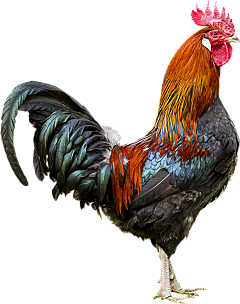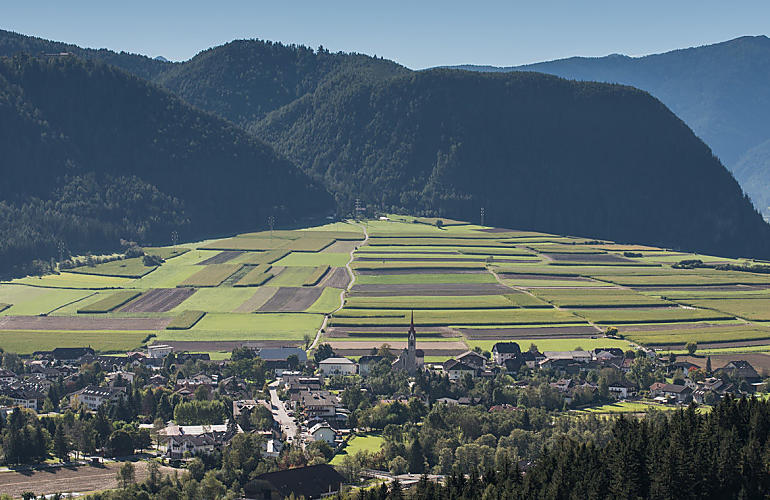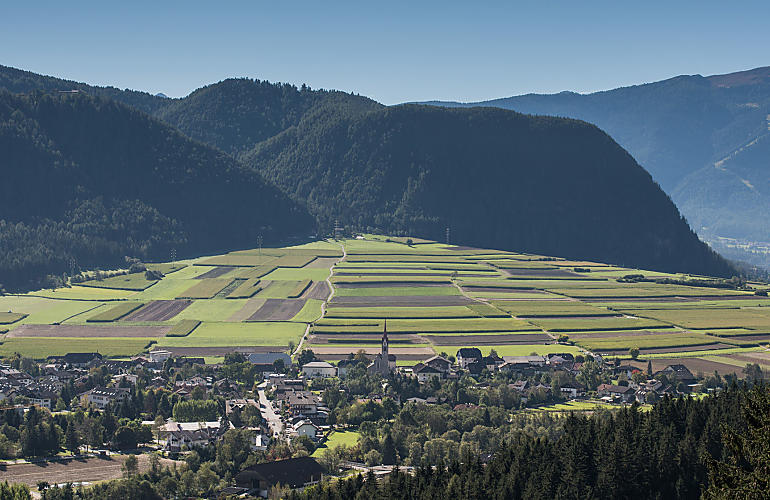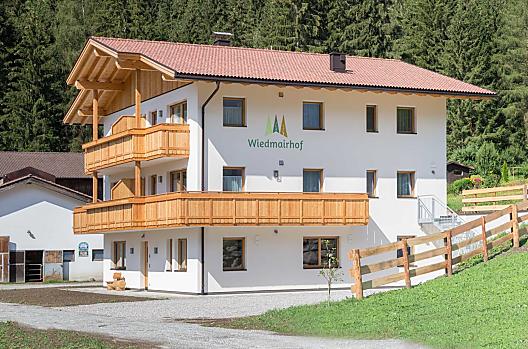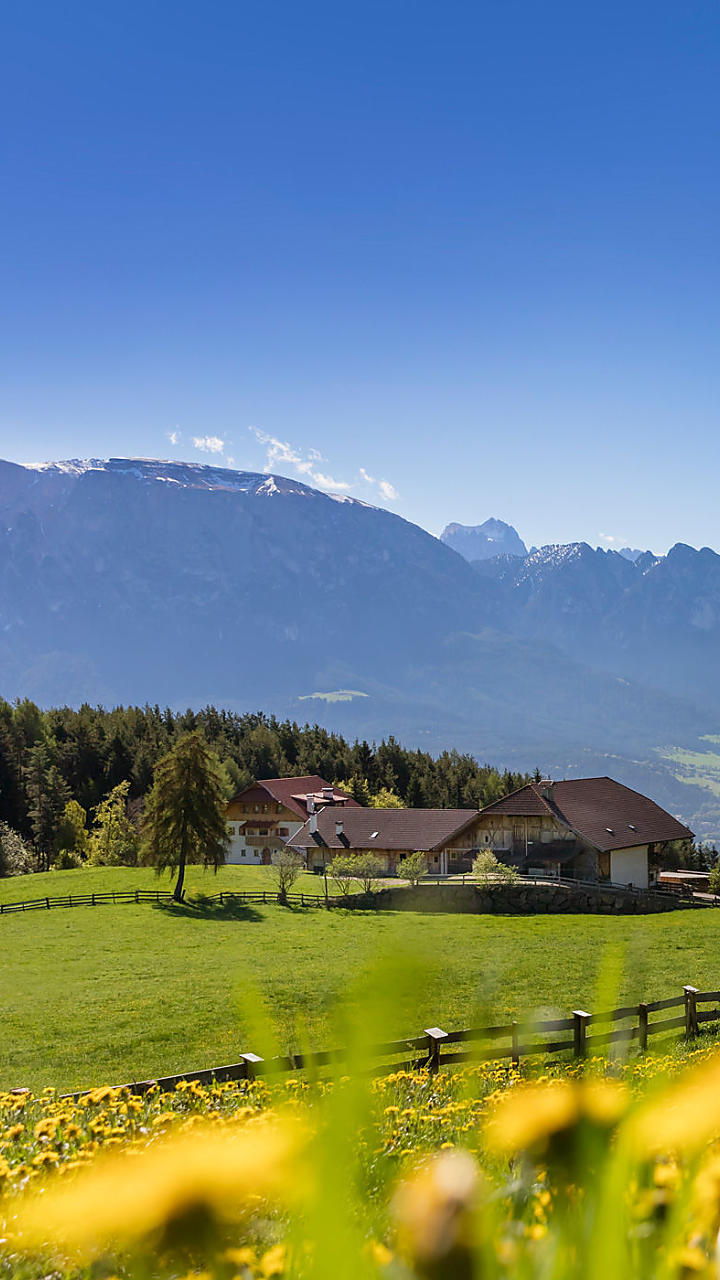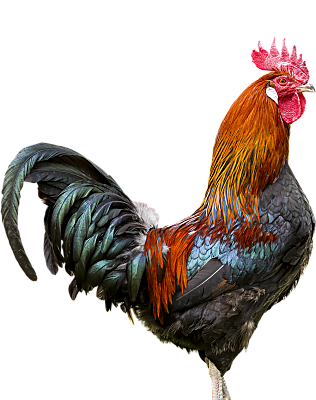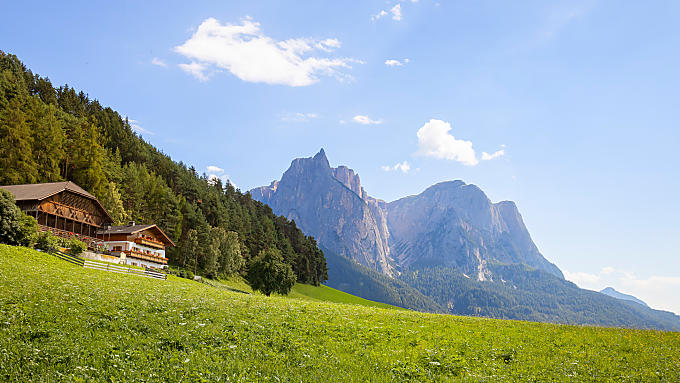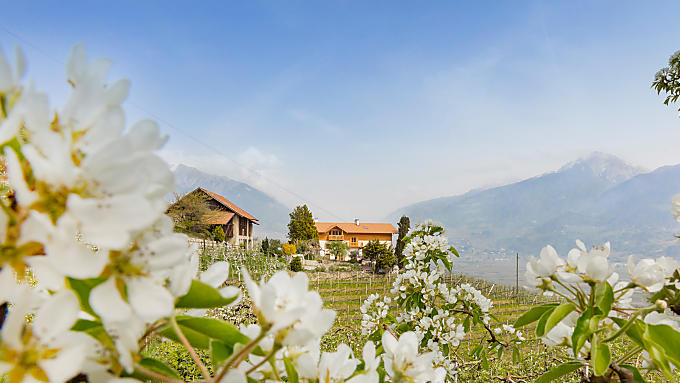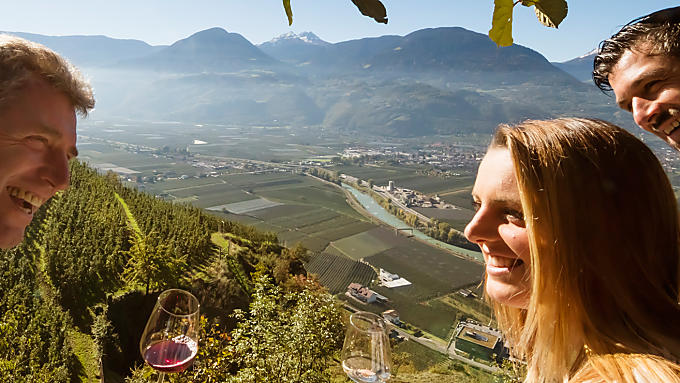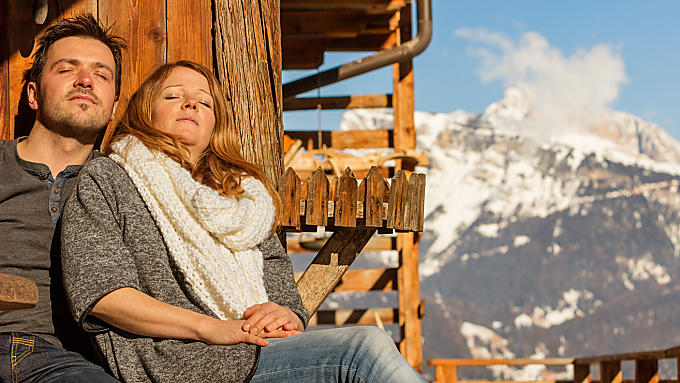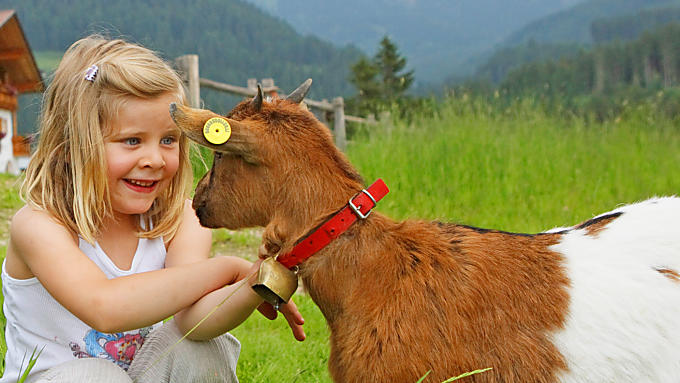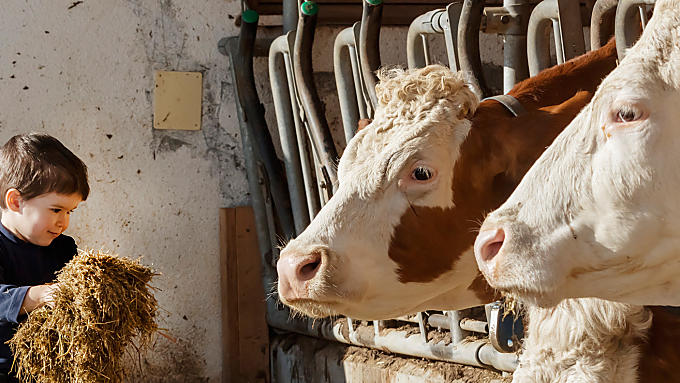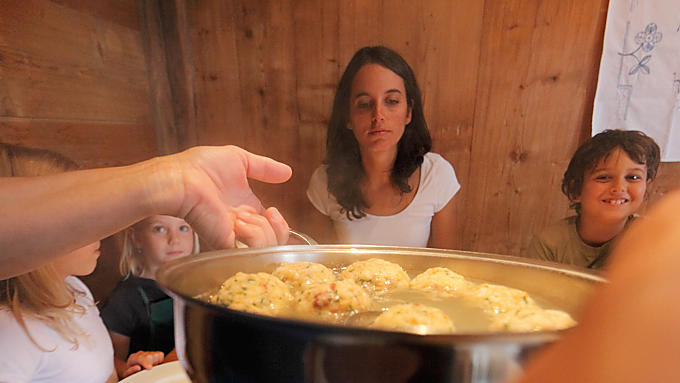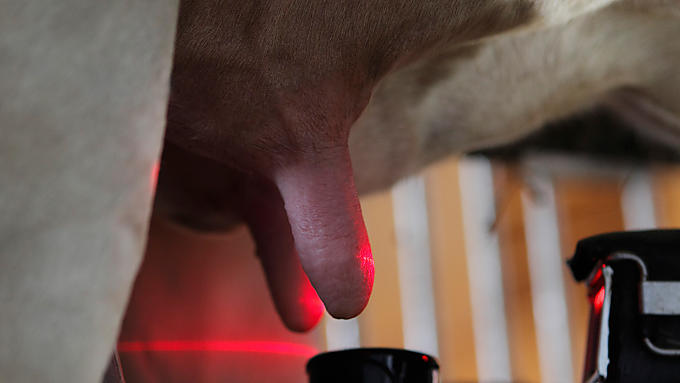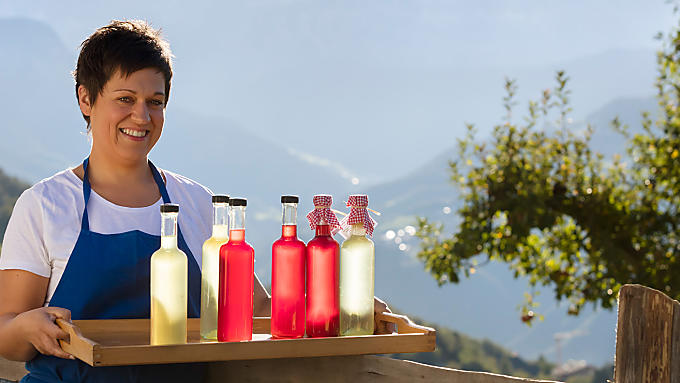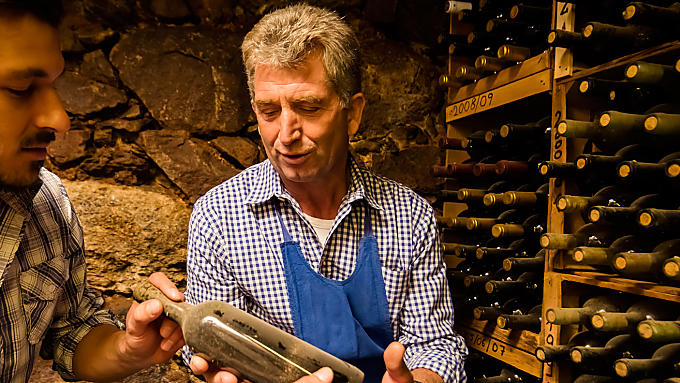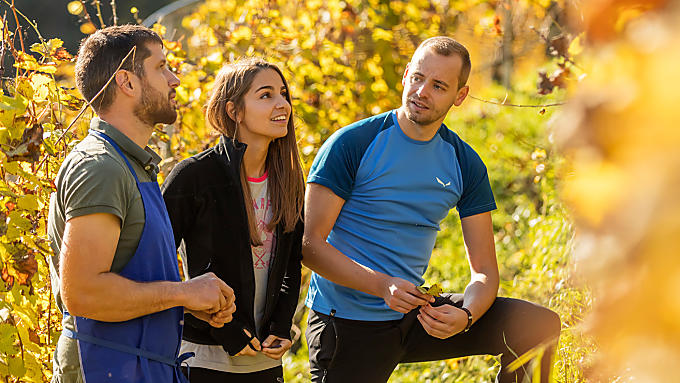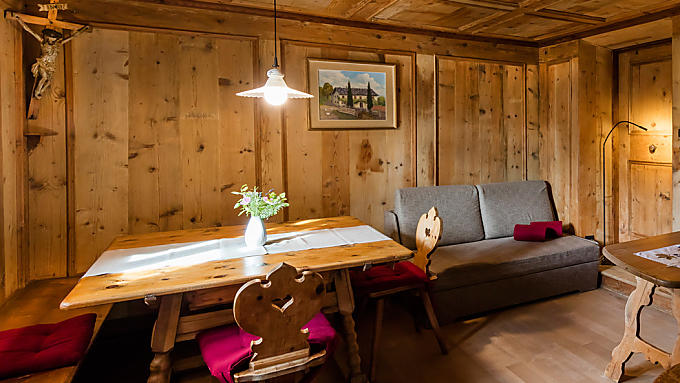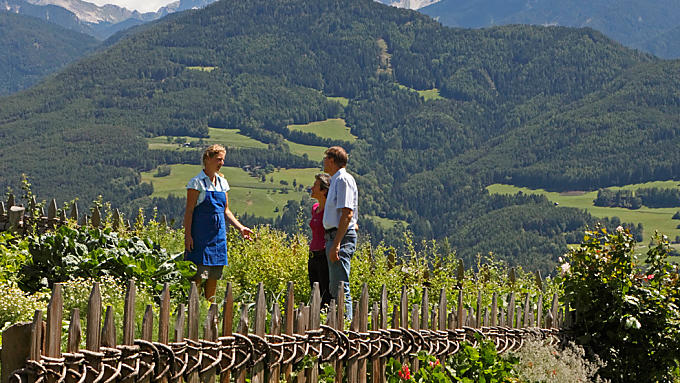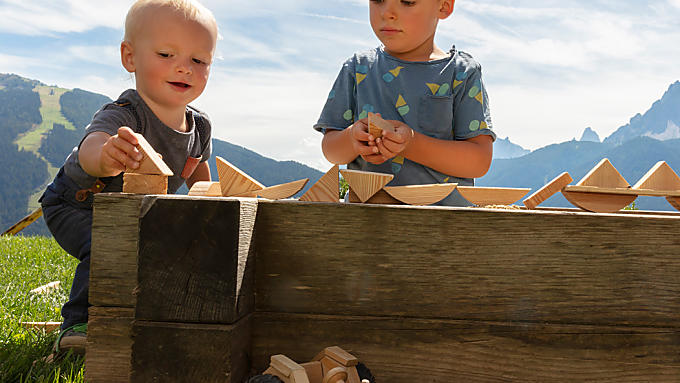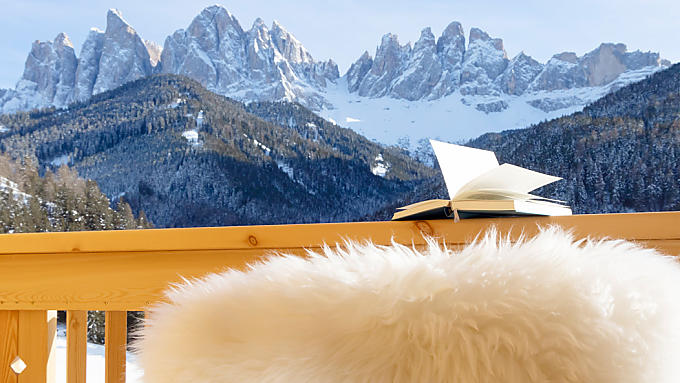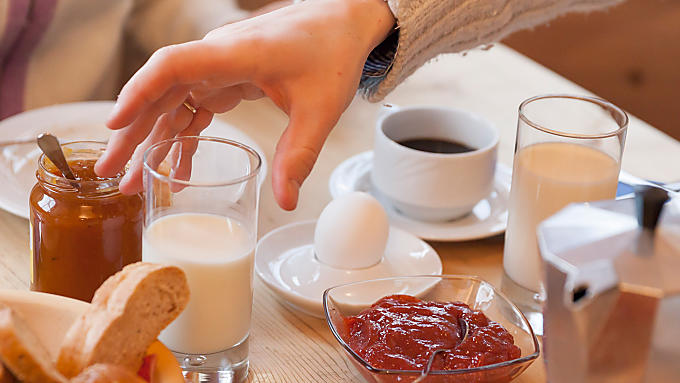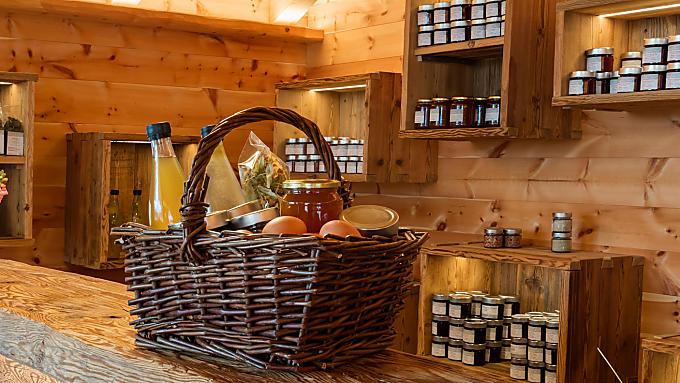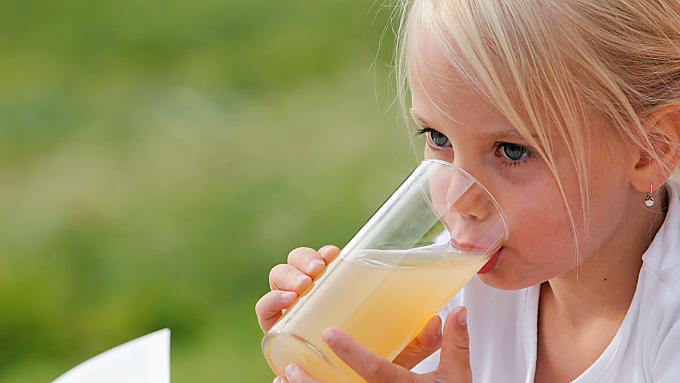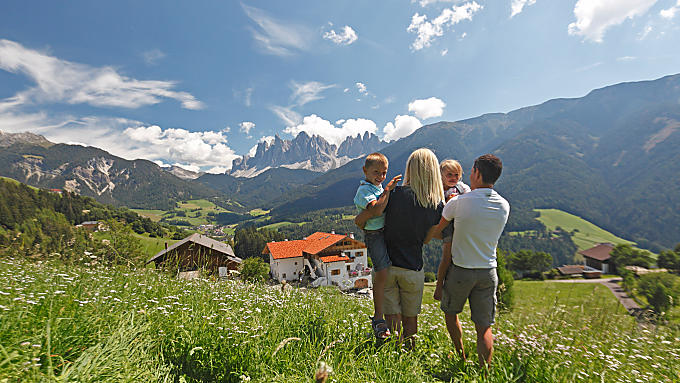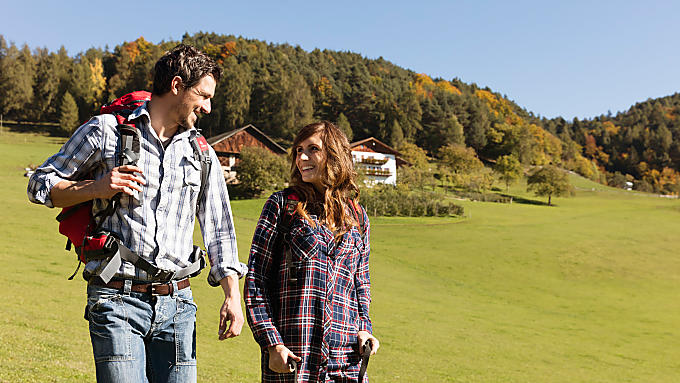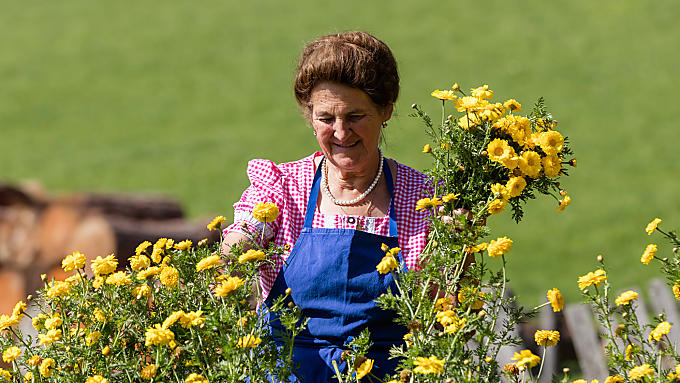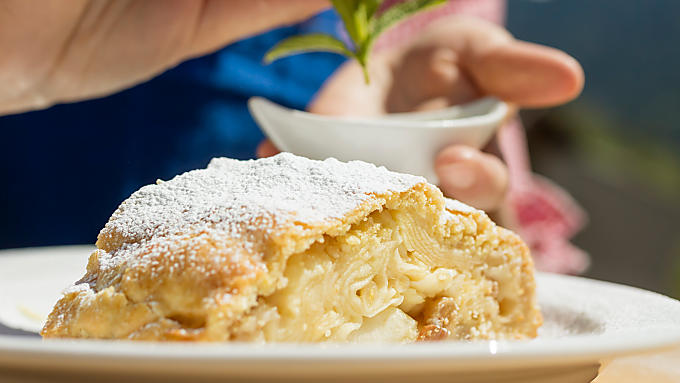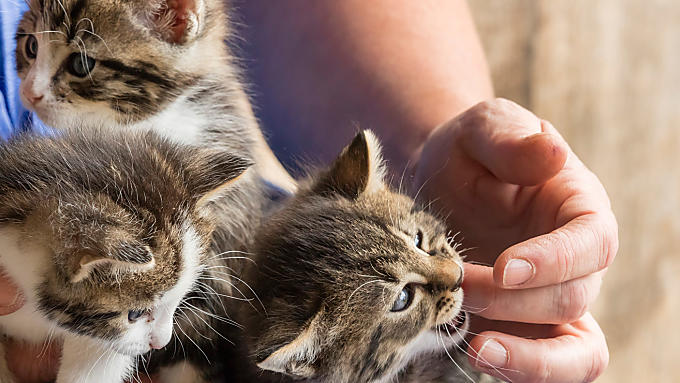Holiday location
Farm Holidays in Gais
Culture, a journey in time and lots of options for action-seekers on a Farm Holiday in Gais, where Pustertal ends and Tauferer Ahrntal begins.
The municipality of Gais consists of five villages: Uttenheim, Mühlbach, Tesselberg, Lanebach and the main village of Gais, and lies at an altitude of between 820 and 3,170 metres.
Culture, a journey in time and lots of options for action-seekers on a Farm Holiday in Gais, where Pustertal ends adn Tauferer Ahrntal begins.
The municipality of Gais consists of five villages: Uttenheim, Mühlbach, Tesselberg, Lanebach and the main village of Gais, and lies at an altitude of between 820 and 3,170 metres.
At one with tradition
Legend has it that the name of Gais comes from 'Geiß', or 'goat'. It is said that an old woman was going in search of her goat in the mountains when the village was struck by a landslide. The goat had saved her life. Another story goes back to the time of the Plague. When the disease had carried off all the members of the village, there was just one man left with his goat. The man's house was called 'Gaiser' and the village then took on this name. Hof Gaiser really did exist until a few centuries ago. The parish is still closely bound up with livestock farming, as well as there being lots of farmers additionally growing berries and vegetables. The expanses of the debris-flow cone of Gaisinger Murkegel have always been valuable arable farmland. Rustic and newer farmhouses are lined up with inns and restaurants, where old farm life with its traditional cooking and customs take centre stage.
Little, littler Lanebach
Mühlbach, Tesselberg and Lanebach have a total population of 200 inhabitants. Picture-postcard mountain villages – if anywhere you have the impression that time has stood still, then it is here. The mills along Mühlbach village stream clatter regularly and in Tesselberg life could not be less hectic, too. The smallest village is even too small to be called a village: Lanebach is a group of farmsteads built on a slope with fewer than 20 inhabitants. The terrain is so steep that people say that even the hens need crampons to stop themselves slipping down. The settlement still had its own school set at around 1,500 metres above sea level until the start of the 1980s. The only mountain school in South Tyrol still standing and containing old equipment is now a listed building and may be visited.
Excursions into the past
Going along the cultural path in Gais means wandering along the tracks of Oswald von Wolkenstein, getting to grips with the poetry of Ezra Pound, the sculptures og the artist brothers Heinrich and Franz Bacher, and items by contemporary artists from South Tyrol that attempt to reflect the essence and creative spirit of Ezra Pound. In Gais, the main village in the parish, there is one of the oldest rural churches in Tyrol. Schloss Neuhaus castle above Gais and the ruins of Uttenheimer Schloss castle and Kehlburg fortress will take visitors back to the Middle Ages for a while. Every castle recounts its own history from long-forgotten days. Kehlburg, for example, is said to go back to 110, and was owned by counts and bishops and enjoyed an illustrious history. Nowadays, just walls overgrown with vegetation and the few neglected frescoes in the chapel can point towards what life may once have been like here.
At one with tradition
Legend has it that the name of Gais comes from 'Geiß', or 'goat'. It is said that an old woman was going in search of her goat in the mountains when the village was struck by a landslide. The goat had saved her life. Another story goes back to the time of the Plague. When the disease had carried off all the members of the village, there was just one man left with his goat. The man's house was called 'Gaiser' and the village then took on this name. Hof Gaiser really did exist until a few centuries ago. The parish is still closely bound up with livestock farming, as well as there being lots of farmers additionally growing berries and vegetables. The expanses of the debris-flow cone of Gaisinger Murkegel have always been valuable arable farmland. Rustic and newer farmhouses are lined up with inns and restaurants, where old farm life with its traditional cooking and customs take centre stage.
Little, littler Lanebach
Mühlbach, Tesselberg and Lanebach have a total population of 200 inhabitants. Picture-postcard mountain villages – if anywhere you have the impression that time has stood still, then it is here. The mills along Mühlbach village stream clatter regularly and in Tesselberg life could not be less hectic, too. The smallest village is even too small to be called a village: Lanebach is a group of farmsteads built on a slope with fewer than 20 inhabitants. The terrain is so steep that people say that even the hens need crampons to stop themselves slipping down. The settlement still had its own school set at around 1,500 metres above sea level until the start of the 1980s. The only mountain school in South Tyrol still standing and containing old equipment is now a listed building and may be visited.
Excursions into the past
Going along the cultural path in Gais means wandering along the tracks of Oswald von Wolkenstein, getting to grips with the poetry of Ezra Pound, the sculptures og the artist brothers Heinrich and Franz Bacher, and items by contemporary artists from South Tyrol that attempt to reflect the essence and creative spirit of Ezra Pound. In Gais, the main village in the parish, there is one of the oldest rural churches in Tyrol. Schloss Neuhaus castle above Gais and the ruins of Uttenheimer Schloss castle and Kehlburg fortress will take visitors back to the Middle Ages for a while. Every castle recounts its own history from long-forgotten days. Kehlburg, for example, is said to go back to 110, and was owned by counts and bishops and enjoyed an illustrious history. Nowadays, just walls overgrown with vegetation and the few neglected frescoes in the chapel can point towards what life may once have been like here.
3 reasons
A holiday in Gais
Ready for adventure
The municipality lies in the middle of Rieserferner-Ahrn Nature Park. A holiday in Gais opens up countless hiking options in the Rieserferner mountains or in the foothills of the Zillertal Alps.
The municipality lies in the middle of Rieserferner-Ahrn Nature Park. A holiday in Gais opens up countless hiking options in the Rieserferner mountains or in the foothills of the Zillertal Alps.
If you don't fancy doing a long excursion but would still like to get some exercise, then you can cycle or walk to Ahrauen biotope. A small wood runs along both sides of the cycle paths in the Ahrntal direction, which used to cover the whole area. You can decide how far you want to go. To views of Schloss Neuhaus castle, you go through fields to Uttenheim and on to Sand in Taufers. Heading south, on the other hand, you approach Bruneck valley basin. A dip in the 'Baggerlacke', the natural bathing lake in the centre of Gais, will provide refreshment from May to September. A Farm Holiday in Gais will provide lots of variety in winter, too. In the middle of the village of Gais, there is an ice rink to skate on with lots of sledging options around it, for example in 'Mühlbacher Talile'. You can get to Kronplatz ski slopes or head into the valley to Speikboden and Klausberg ski pistes in little time from a holiday flat or room in Gais.

